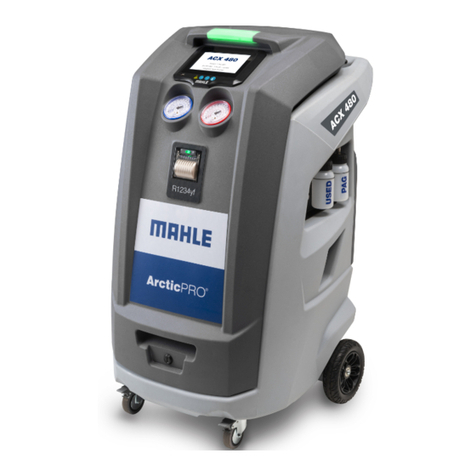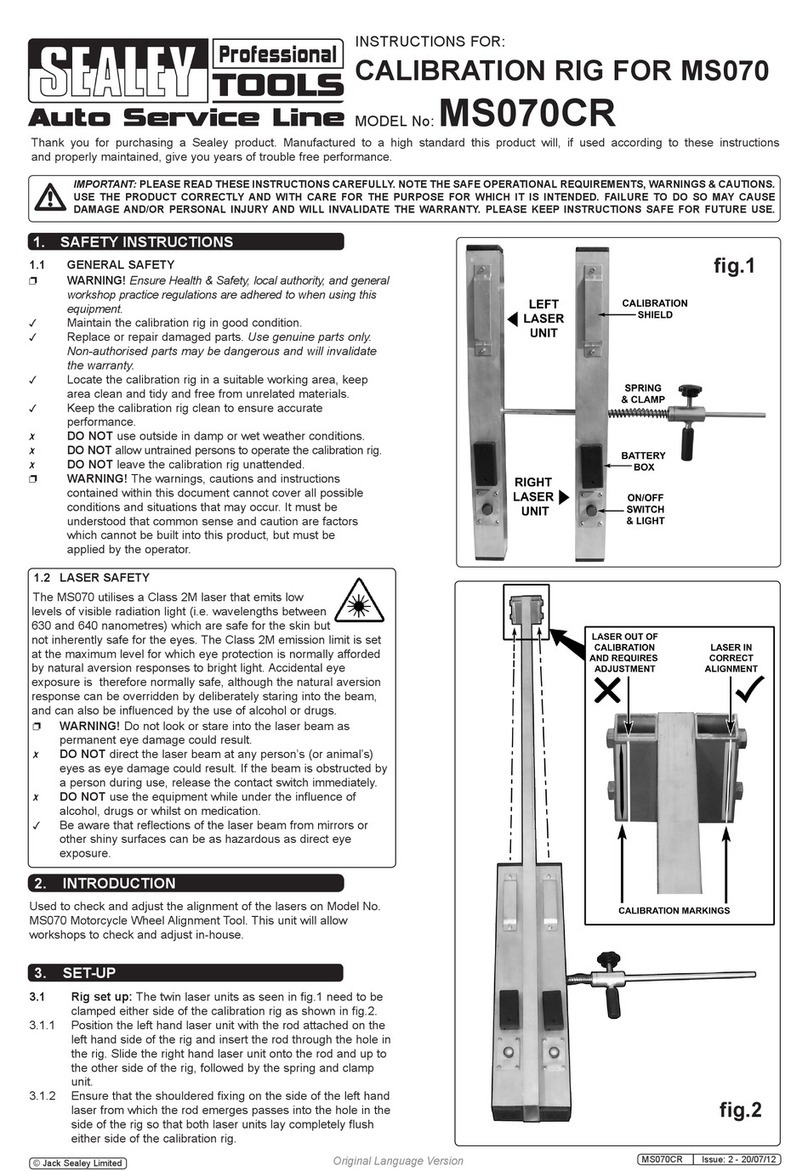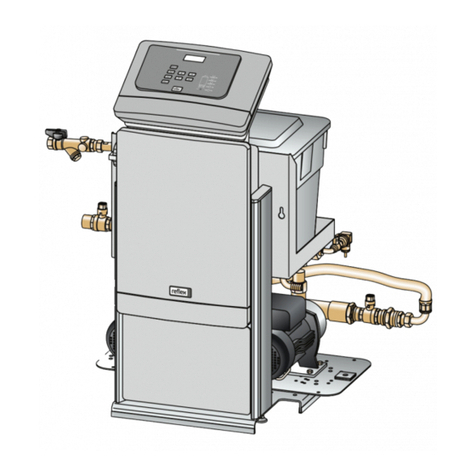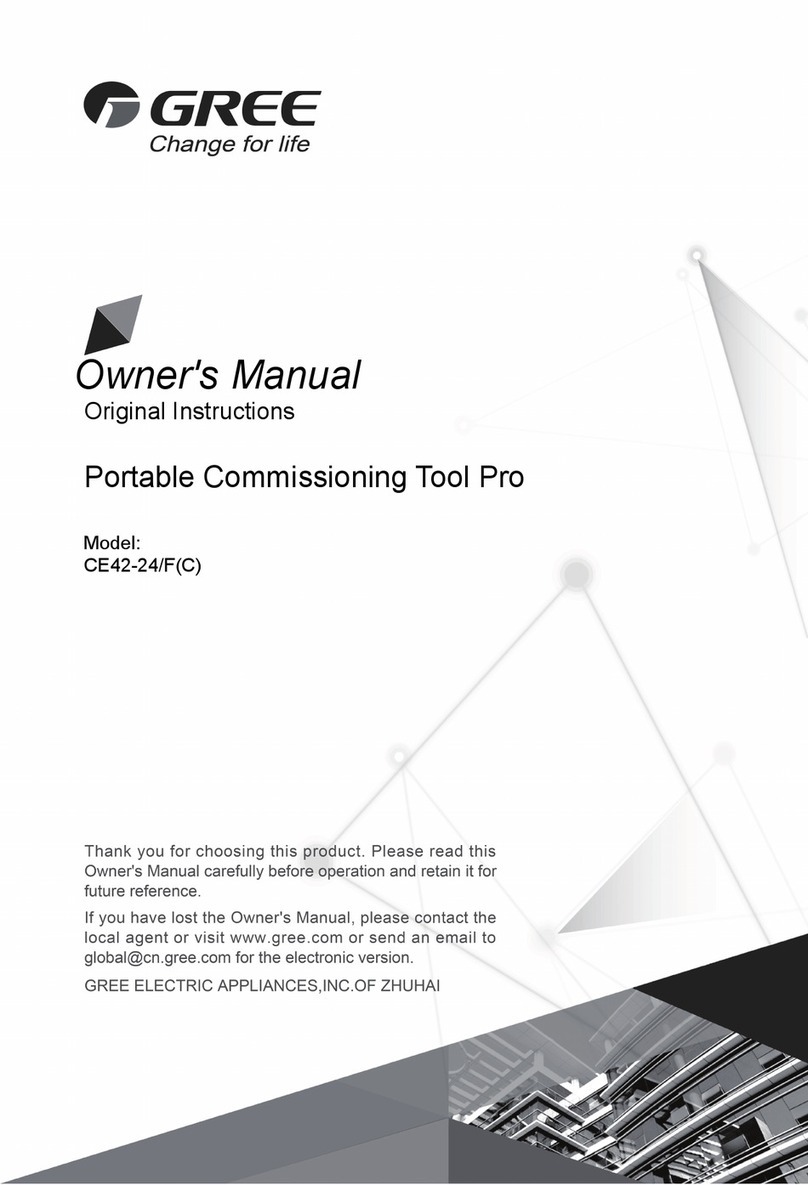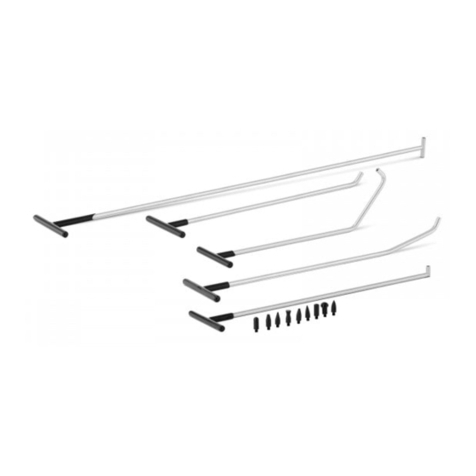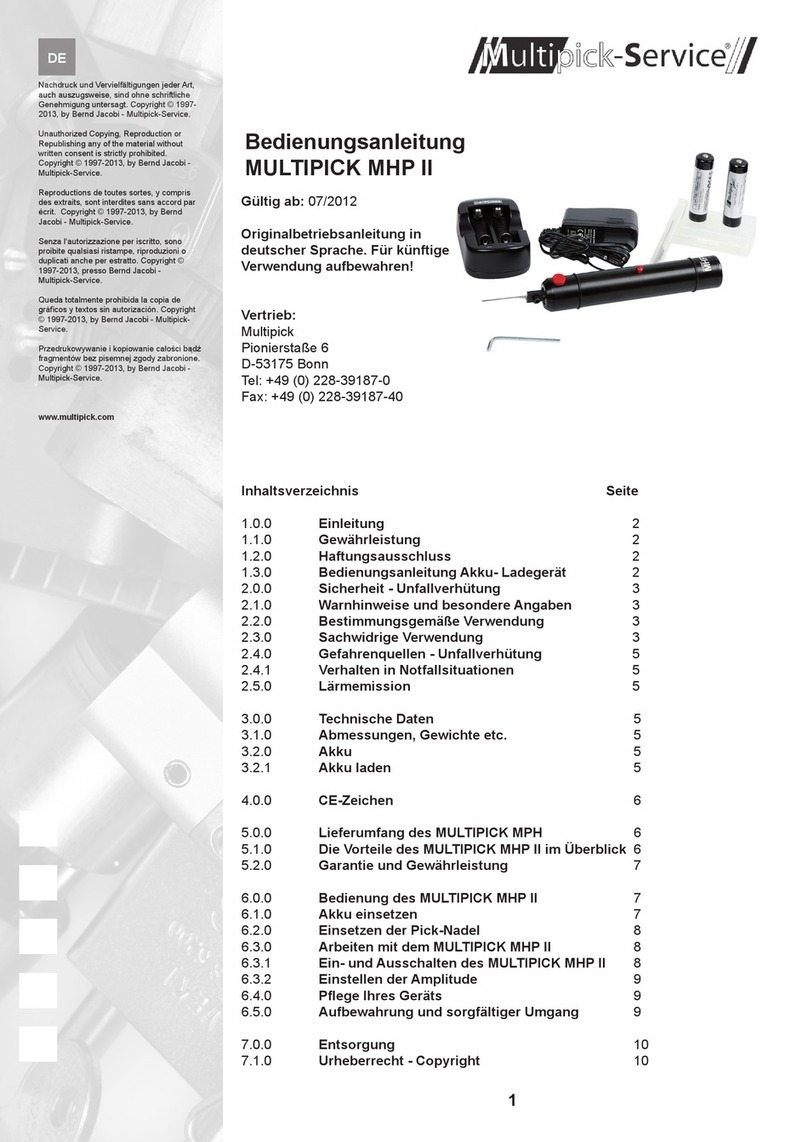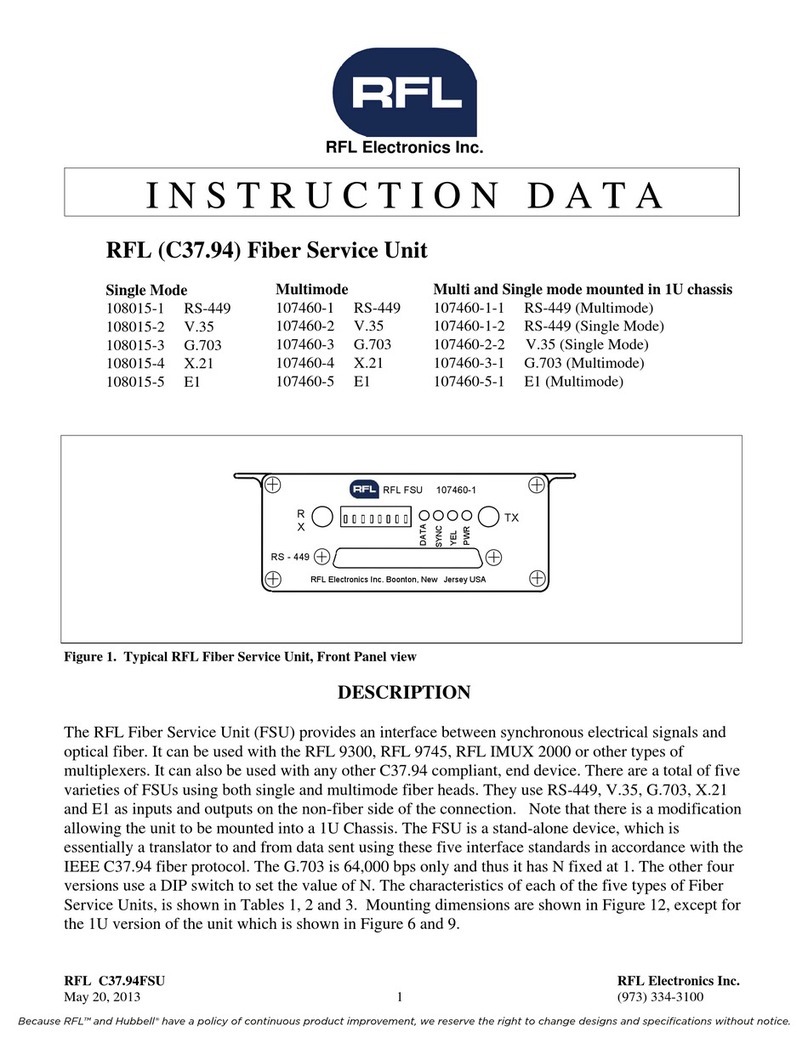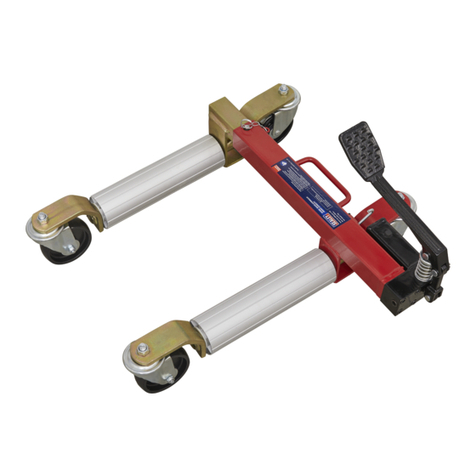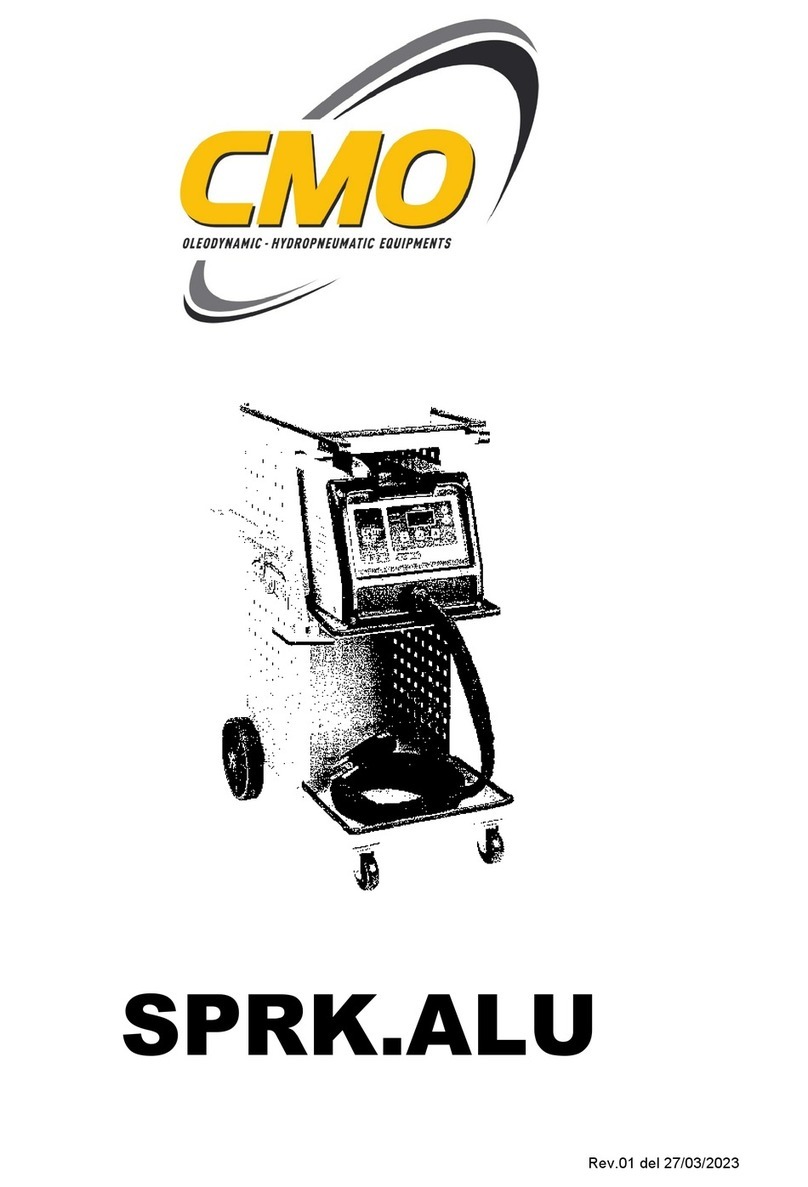MAHLE BFX-20 User manual

MAHLE BFX-20
EN
Operation Manual
Brake Fluid Exchage Unit

© MAHLE
2 | BFX-20 |en
1. Information 4
1.1 Document warnings 4
1.2 Important notes 4
1.2.1 User group 4
1.2.2 Agreement 4
1.3 Safety regulations 5
1.3.1 BFX-20 5
1.4 Technical data 5
2. Product description 6
2.1 Application 6
2.2 Improper use 6
2.3 Operating principle 6
2.4 Scope of delivery 6
2.5 Description of unit 6
2.6 Commissioning 7
2.6.1 Unpack unit 7
2.6.2 Unit setup 7
2.7 Startup procedure 7
3. Operation 8
3.1 Removing brake fluid from reservoir 8
3.2 Brake fluid exchange 8
4. Maintenance 9
4.1 Troubleshooting 9
4.2 Disassembling control module 9
5. Notes 10
Contents

© MAHLE
| BFX-20 | 3BFX-20 | 3| 3 en

© MAHLE
4 | BFX-20 | Informationen
1. Information
1.1 Document warnings
Warning notices—Structure and meaning
Warning notices warn of dangers to the user or people in the
vicinity. Warning notices also indicate the consequences of the
hazard as well as preventive action. Warning notices have the
following structure:
Warning
symbol
KEY WORD – Nature and source of hazard!
Consequences of hazard in the event of failure
to observe action and information given.
hHazard prevention action and information.
The key word indicates the likelihood of occurrence and the
severity of the hazard in the event of non-observance:
Key word Probability of
occurrence
Severity of danger if in-
structions not observed
DANGER Immediate impending
danger
Death or severe injury
WARNING Possible impending
danger
Death or severe injury
CAUTION Possible dangerous
situation
Minor injury
Symbols in this documentation
Symbol Designation Explanation
mAttention Warns about possible property damage.
tInformation Practical hints and other useful information.
1.
2.
Multi-step
operation Instruction consisting of several steps.
hOne-step
operation Instruction consisting of one step.
Intermediate
result
An instruction produces a visible interme-
diate result.
Final result There is a visible final result on completion
of the instruction.
Warning Hazard that can cause death or serious in-
jury. Follow the instructions.
Caution Danger that can cause damage to the
equipment. Follow the instructions.
Warning Health warning.
Environmental Dispose of waste in manner consistent with
local regulations.
Personal
protection Wear protective glasses.
Personal
protection Wear protective gloves.
1.2 Important notes
Before start up, connecting and operating MAHLE
products it is absolutely essential that the Original
instructions/owner’s manual and, in particular, the
safety instructions are studied carefully. By doing so
you can eliminate any uncertainties in handling MAHLE products
and thus associated safety risks upfront; something which is in
the interests of your own safety and will ultimately help avoid
damage to the device. When a MAHLE product is handed over
to another person, all documentation and and information on
its designated use must be handed over to the person. Contact
MAHLE if you detect a problem that you cannot solve with this
manual.
1.2.1 User group
The product may be used by skilled and instructed personnel
only. Personnel scheduled to be trained, familiarized, instructed
or to take part in a general training course may only work with
the product under the supervision of an experienced person.
All work conducted on pressurized equipment may be performed
by persons with sufficient knowledge and experience in the field
of refrigeration, cooling systems and coolants and, also be aware
of the risks involved in the use of pressurized devices.
1.2.2 Agreement
By using the product you agree to the following regulations:
Copyright
Software and data are the property of MAHLE or its suppliers
and protected against copying by copyright laws, international
agreements and other national legal regulations. Copying or sell-
ing of data and software or any part thereof is impermissible and
punishable; in the event of any infringements MAHLE reserves
the right to proceed with criminal prosecution and to claim for
damages.
Liability
All data in this program is based—where possible—on manufac-
turer and importer details. MAHLE does not accept liability for the
correctness and completeness of software and data; liability for
damage caused by faulty software and data is ruled out. Whatever
the event, MAHLE liability is restricted to the amount for which
the customer actually pays for this product. This disclaimer of
liability does not apply to damages caused by intent or gross
negligence on the part of MAHLE.

© MAHLE
Information | BFX-20 | 5BFX-20 | 5| 5 en
1.3 Safety regulations
1.3.1 BFX-20
Always carefully study and follow all the safety regulations before
using the MAHLE product. Correct use of the BFX-20 is impor-
tant for your personal safety and for trouble-free functionality.
Incorrect use can cause damage to the unit or lead to incorrect
functionality.
Brake fluids are poisonous and may cause damage
to health!
yRegular maintenance should be performed on the BFX-20 to
ensure proper and safe operation.
yImproper handling may lead to damage to health or property.
yThe brake maintenance device may only be operated by those
trained to use it. Unauthorized persons are not permitted to
operate it.
yAlways check the brake fluid exchange unit, hoses, cables and
plugs before use. Do not use the brake maintenance device if
it is damaged. The device may only be repaired by a specialist.
Never open the brake maintenance device yourself.
yThe BFX-20 unit should not be exposed to excess moisture
or be operated in wet areas.
yDo not make any changes to the design of the brake fluid
exchange unit.
Pull out the plug before doing any work on the brake
fluid exchange unit. Plug in the plug only when the
brake fluid exchange unit is switched off.
yAvoid any contact with brake fluid.
yWash skin immediately with water if it comes into contact
with brake fluid.
yRemove contaminated clothes.
yDo not carry any cleaning cloths or other items soaked in
brake fluid in your clothing.
yClean any spills immediately. Brake fluid is corrosive and will
damage the finish on most painted surfaces.
Wear suitable protective gloves to minimize the
danger of injury from contact with skin.
Wear protective goggles to minimize the danger of
injury from splashes.
yAlways use vehicle specified brake fluid. Failure to do so may
cause brake system damage. The unit is designed to use
DOT specified brake fluid. Use of any other fluid type is not
recommended and may void warranty.
yIt is important to test drive every vehicle after the service to
verify proper brake system operation. Failure to do so could
result in undetected brake system failure.
1.4 Technical data
Feature Value/Range
Max. container size 5 Liters
Working pressure 0.4-3.5 bar
Main voltage 115 VAC / 60Hz
Filling hose length 3.5 m
Unit dimensions 290 x 310 x 400 mm
Weight 30 kg
Noise ≤70 dB(A)

© MAHLE
6 | BFX-20 | Product descriptionen
2. Product description
2.1 Application
BFX-20 is solely meant for filling and emptying brake fluid from
brake and clutch systems in motorized vehicles. Any other use
beyond this is regarded as improper and forbidden.
2.2 Improper use
mOperating the device with fluids other than brake fluid can
damage the brake fluid exchange device and is thus forbid-
den. In the event of improper use, MAHLE is not liable for any
damage caused.
2.3 Operating principle
The brake fluid is withdrawn from the container by means of
a pump and constantly pumped into the brake fluid vessel at
a pressure of up to 3.5 bar. The used brake fluid can then be
drained from the individual wheel brake cylinders until the new
brake fluid comes out.
In doing so, you avoid having to transfer liquids and the brake
fluid can be absorbed in water, unlike conventional systems.
The pump for filling the brake fluid vessel has a pump monitor.
The pump switches off if pressure cannot be built up or if the
pump suctions air.
2.4 Scope of delivery
Description
BFX-20 unit
Adapters
Fresh fluid bottle (1 gal)
Waste fluid bottle (1L)
Bleeder bottle (1L)
Operation manual
2.5 Description of unit
Fig. 1: Front view
Fig. 2: Front control panel
1 Fuse (6.3A)
2 Start button (momentary)
3 Main exchange power switch
4 Empty master cylinder power switch
5 Pressure adjustment valve
6 Pressure gauge

© MAHLE
Product description | BFX-20 | �BFX-20 | �| � en
2.6 Commissioning
tAll the operations described in this section must be
performed prior to first use.
2.6.1 Unpack unit
mWhen removing the packaging, use care to ensure there is
no damage caused to the BFX-20 unit or any of the included
accessories.
tDo not unplug any electrical connections and only have in-
ternal components opened and repaired by trained customer
service personnel.
tContact customer service in the event of any transportation
damage.
2.6.2 Unit setup
Place the brake maintenance device on a level surface. Make
sure the filling hose is not under me-chanical load caused by, for
example, the vehicle being lifted up on a hydraulic ramp.
During operation and use, the workplace is the area surrounding
the brake maintenance device. Otherwise, no permanent work-
place for the brake maintenance device is foreseen.
2.� Startup procedure
tThis section describes the connection of the brake fluid ex-
change unit to the fresh fluid container as well as the procedure
for bleeding air from the system prior to first use.
mYou must strictly obey all safety instructions described in
Section 1.3 of this manual.
1. Prior to initial operation, ensure proper voltage is being sup-
plied to the unit.
2. Position the unit on a firm and level surface.
3. Unscrew the lid of the new brake fluid container.
4. Place new fluid container in the holder of the unit.
5. Feed the suction hoses down to the base of the container.
The depth can be adjusted by sliding the rubber cone up/
down the hoses.
6. In order to bleed the brake fluid exchange unit, do not mount
the adapter on the vehicle, but onto the fill hose and hold over
a waste fluid bottle.
7. Press switch 3 (Fig. 2) to ON position.
8. Then press and hold switch 2 (Fig. 2) to ON position.
9. Hold adater over the waste fluid bottle until brake fluid is
dispensed without any air bubbles.
10. Disconnect adapter from fill hose while pump is running and
press switch 3 to OFF position.

© MAHLE
8 | BFX-20 | Operationen
3. Operation
3.1 Removing brake fluid from reservoir
tThe brake fluid exchange unit has a suction function for the
content of the master cylinder reservoir. A filter is installed in
the suction hose to keep large dirt particles away from pump.
1. Make sure the waste fluid bottle is empty and connected.
2. Unscrew lid of master cylinder reservoir.
3. Press switch 4 (Fig. 2) to ON position to turn on suction pump.
4. Hold the suction hose in the opening of the brake fluid master
cylinder reservoir and remove the brake fluid.
5. Press switch 4 (Fig. 2) to OFF position to turn off suction pump.
6. Dispose of the waste brake fluid as indicated in the safety data
sheet for the brake fluid.
3.2 Brake fluid exchange
yThe safety instructions in the section "Safety Regulations"
must be strictly observed.
yBefore starting service, please observe the vehicle manufac-
turer's instructions about the maximum filling pressure and
specific working instructions.
yIn principle, for every type of vehicle, the instructions and
guidelines stipulated by the manufacturer for the bleeding of
the brake system shall always apply.
tThe factory setting of the pressure control is a working pres-
sure of 2 bar. This ensures that the brake fluid master cylinder
reservoir is not deformed and that there are no leaks at the
bleeders. A lower or higher working pressure can be set on
the pressure adjustment valve.
1. Install the adapter included onto the opening of the brake
fluid master cylinder.
2. Connect the fill hose to the previously mounted adapter.
3. Power on the brake fluid exchange unit with switch 3.
4. Press the START button (2) and hold it until the pressure has
reached at least 0.5 bar. The operating pressure (max. 3.5
bar) can be adjusted to the desired operating pressure using
the pressure control .
5. Check the master cylinder reservoir as to whether the adapter
is connected properly and is leak-tight. If brake fluid escapes,
switch off the brake fluid exchange unit immediately and find
out the cause.
6. Now bleed the brakes one after the other beginning with the
back right and ending with the front left brake. To do so, open
the valve on each wheel brake cylinder. Collect the old brake
fluid in the collecting bottle. The valve can be closed again
as soon as the new brake fluid escapes from the drain hole
bubble-free.
7. Turn off the brake fluid exchange unit by pressing switch 3.
8. Check the pressure gauge to see if the pressure has fallen.
9. Note: The brake fluid exchange unit usually decreases the ex-
isting pressure. However, if the pressure was reduced during
the filling process, the pressure will still remain in the system.
The pressure adjustment valve must first be released of pres-
sure. To do so, turn the pressure adjustment to the right after
switching off until the point of release has been reached. The
working pressure falls to 0 bar.
10. Disconnect the pressure-free fill hose from the adapter.
11. The brake fluid master cylinder reservoir is now full to the top.
Use the suction function to lower fluid level to MAX fill line.
mIf after the bleeding process or after changing brake fluid the
pedal actuation on the brake or clutch pedal is too long, or the
build up of pressure is too "soft", the braking or clutch system
must be bled again after powerfully activating the brake or
clutch several times.

© MAHLE
Maintenance | BFX-20 | 9BFX-20 | 9| 9 en
4. Maintenance
mInform the manufacturer's service department if your brake
fluid exchange unit still does not work properly even after
following the previous instructions. You will receive fast and
reliable assistance.
4.1 Troubleshooting
Problem Cause Correction
Pump not
suctioning
or releasing
pressure
•Fluid container
empty.
•Pressure control
closed or fully
open.
•Fill hose
pinched.
•Air in hose.
•Filter on suction
hose blocked.
•Change containers/refill container.
•Set correct working pressure.
•Remove/fix hose pinch.
•Bleed brake fluid exchange unit.
•Clean filter.
Loud flowing
noises
•Air in pressure
control.
•With fill hose closed, turn on devise
and adjust pressure a few times.
No power •Fuse blown. •Replace fuse.
4.2 Disassembling control module
tIf, after consulting the service department, a malfunction of
the brake fluid exchange unit is determined, only the control
unit needs to be sent in and the repaired.
mAlways disconnect power before working on the brake fluid
exchange unit.
mNever clean the brake fluid exchange unit with a steam cleaner.
mAlways keep the brake fluid exchange unit clean. Remove
leaked brake fluid immediately.
mCheck the filter on the suction hose regularly and replace
where necessary.
mDisassembly or assembly work may only be carried out by a
specialized technician.
1. Disconnect the unit from the power source by disconnecting
the power cord.
2. Disconnect all hoses from the containers.
3. Make sure the hoses are empty. If not, close them with plugs.
4. Remove the screws on the side of the control unit.
5. Pull hoses and mains cable out of the casing. The control unit
is now ready for dispatch.
6. The control unit is reassembled in reverse order.

© MAHLE
10 | BFX-20 | Notesen
5. Notes

© MAHLE
Notes | BFX-20 | 11BFX-20 | 11| 11 en

2018-07-06
035 82372 00
MAHLE Aftermarket Inc.
10 Innovation Drive
York, PA 17402
USA
717-840-0678
www.servicesolutions.mahle.com
Table of contents
Other MAHLE Service Equipment manuals

MAHLE
MAHLE AIR-NEX 9380 User manual
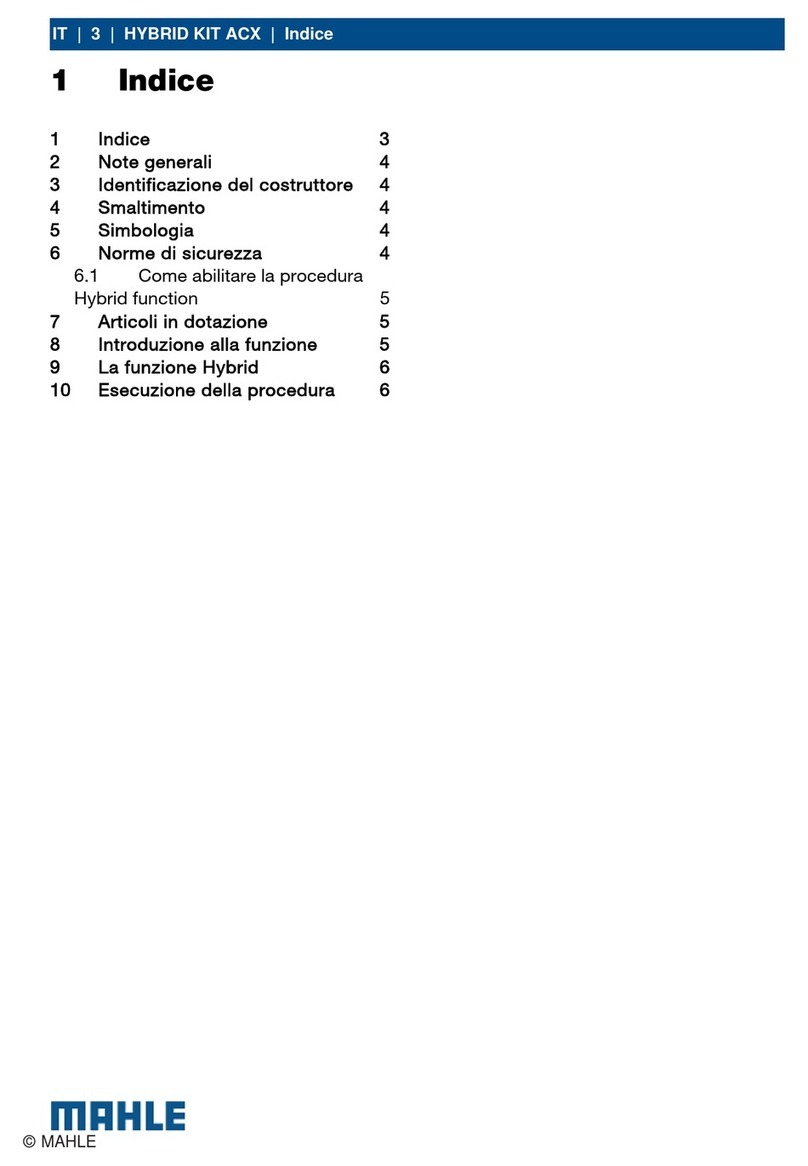
MAHLE
MAHLE HYBRID KIT ACX User manual

MAHLE
MAHLE AIR-NEX 9310 User manual

MAHLE
MAHLE BrainBee AIR-NEX 9320 User manual
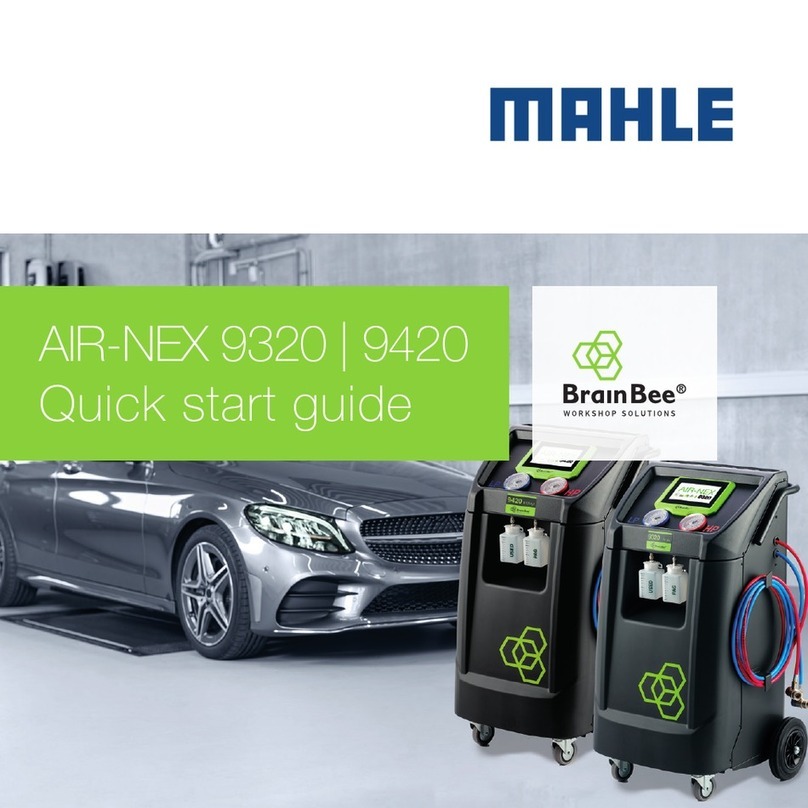
MAHLE
MAHLE AIR-NEX 9320 User manual
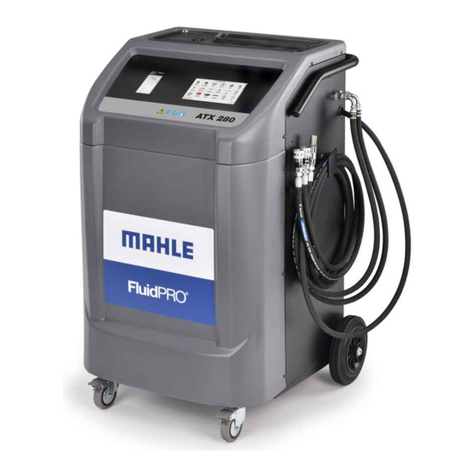
MAHLE
MAHLE FluidPRO ATX 280 User manual
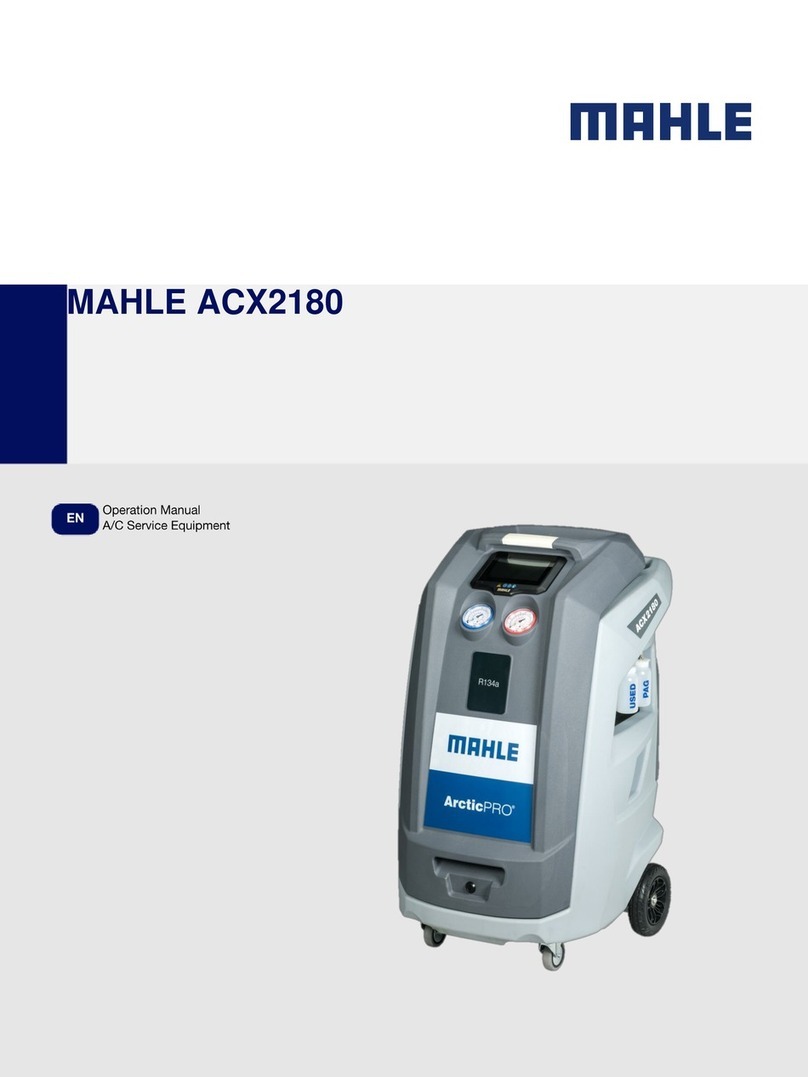
MAHLE
MAHLE ArcticPRO ACX2180 User manual
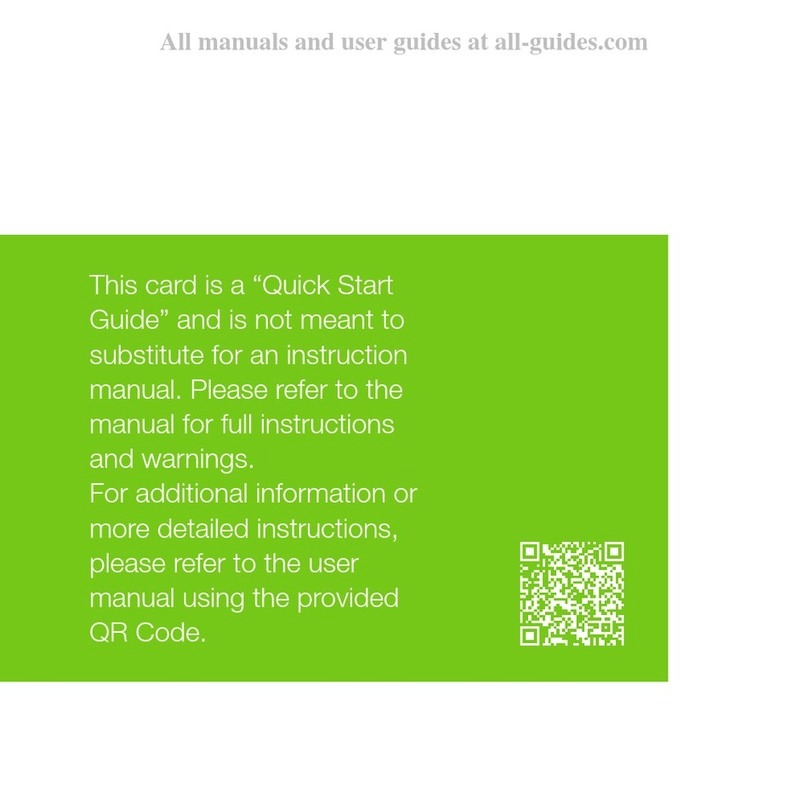
MAHLE
MAHLE BrainBee AIR-NEX 9310 User manual
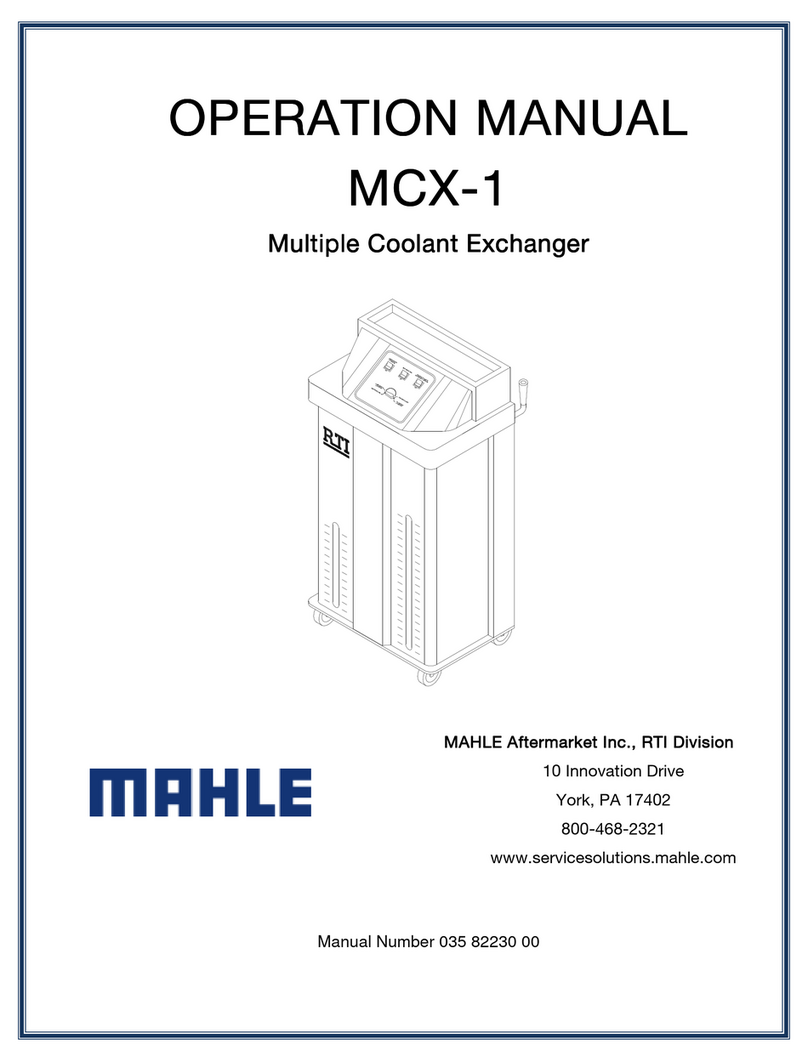
MAHLE
MAHLE MCX-1 User manual
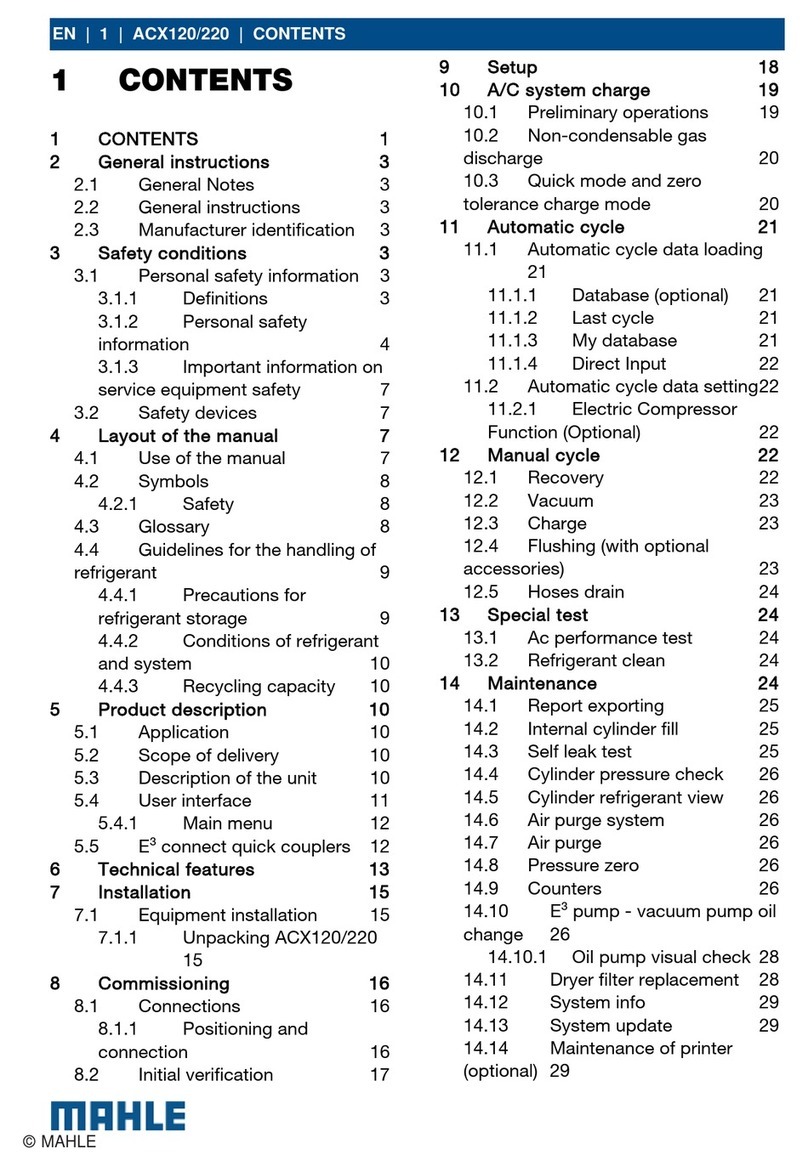
MAHLE
MAHLE ACX120 User manual
Popular Service Equipment manuals by other brands
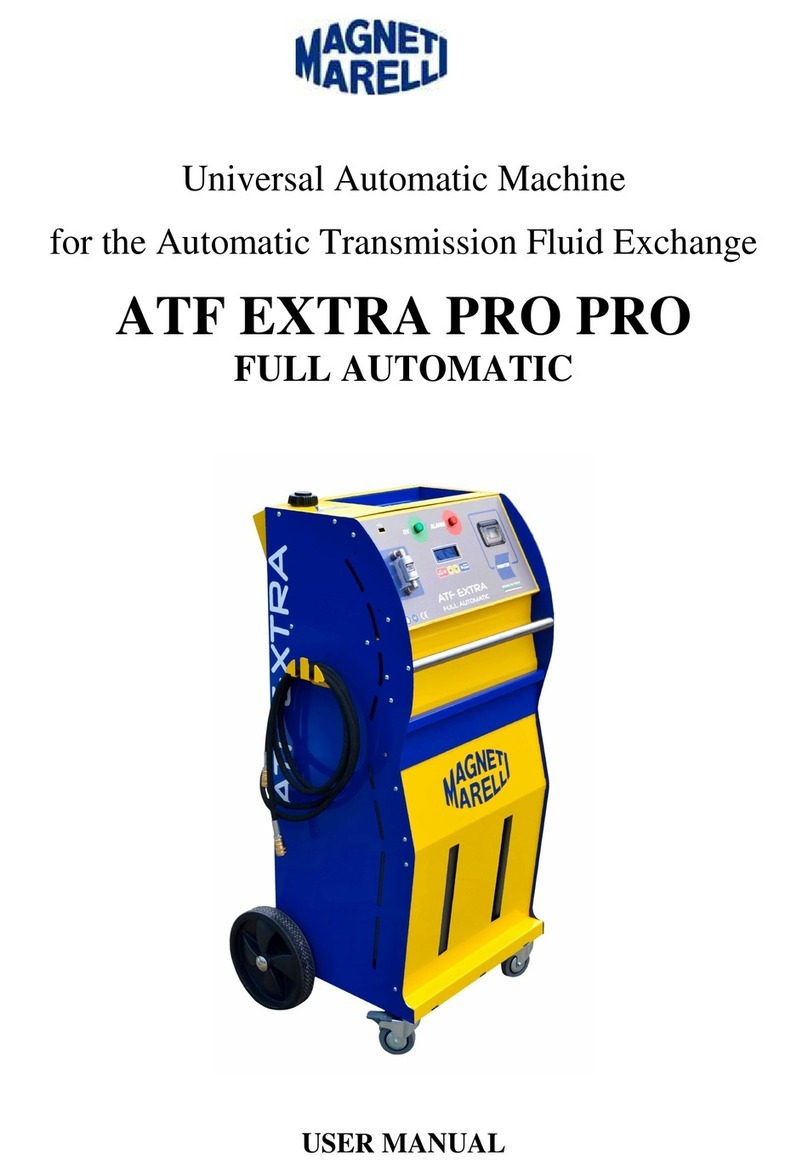
Magneti Marelli
Magneti Marelli ATF EXTRA PRO user manual
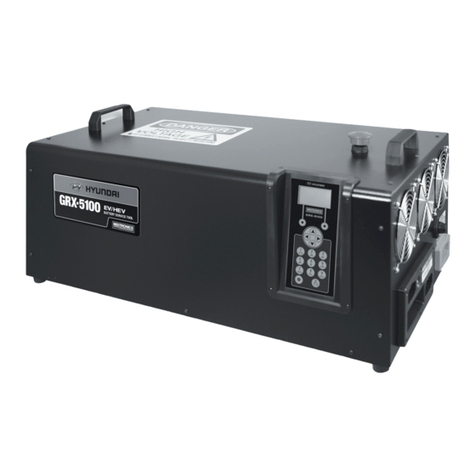
Hyundai
Hyundai Midtronics GRX-5100 instruction manual

Tronair
Tronair 01-1229-0011 Operation & service manual
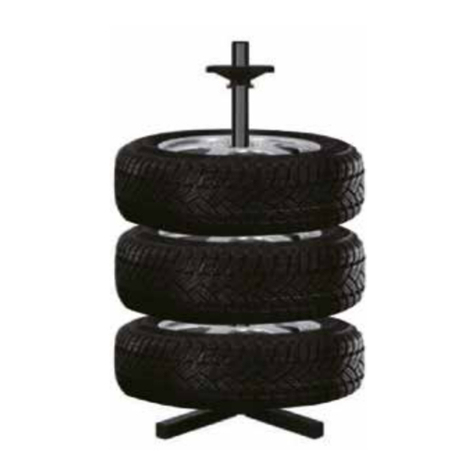
ULTIMATE SPEED
ULTIMATE SPEED HG02236 Assembly and Safety Advice
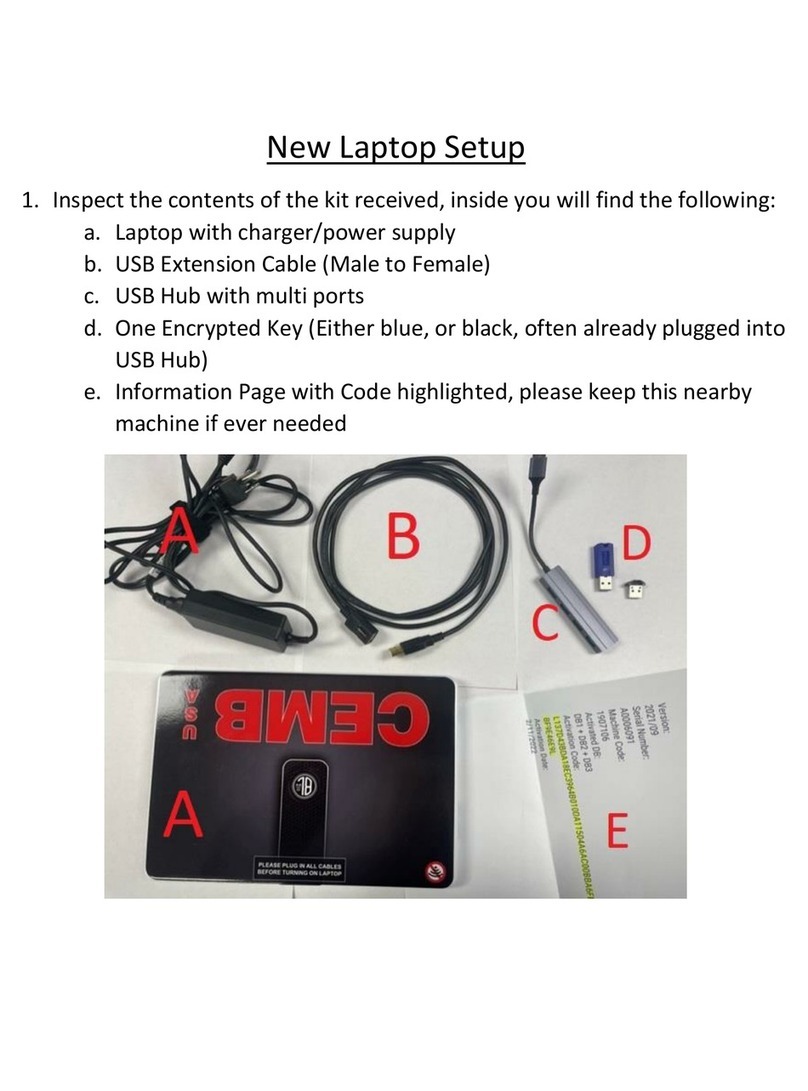
CEMB
CEMB DWA1000CWAS manual
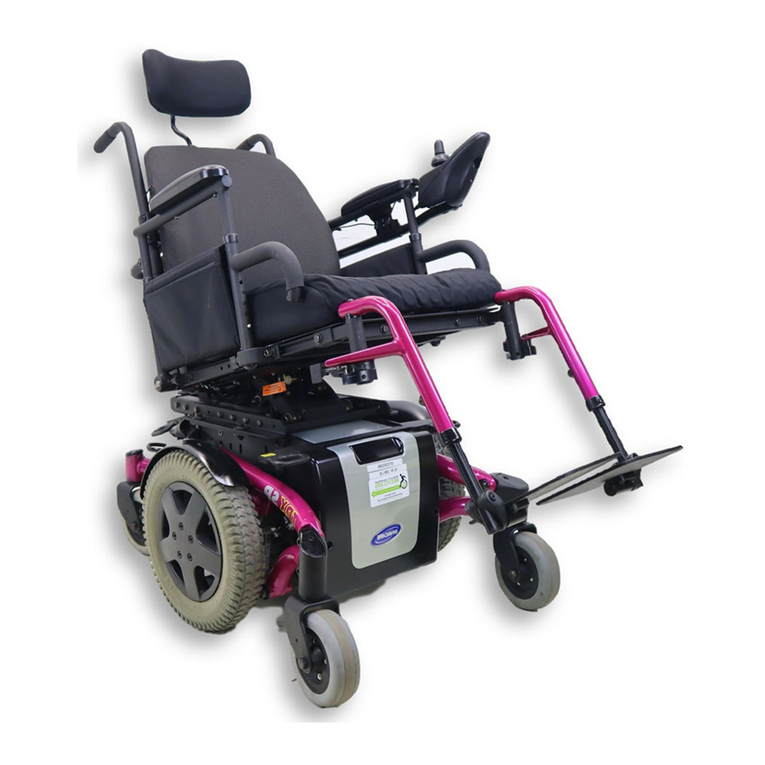
Invacare
Invacare TDX SP Assembly, installation and operating instructions
